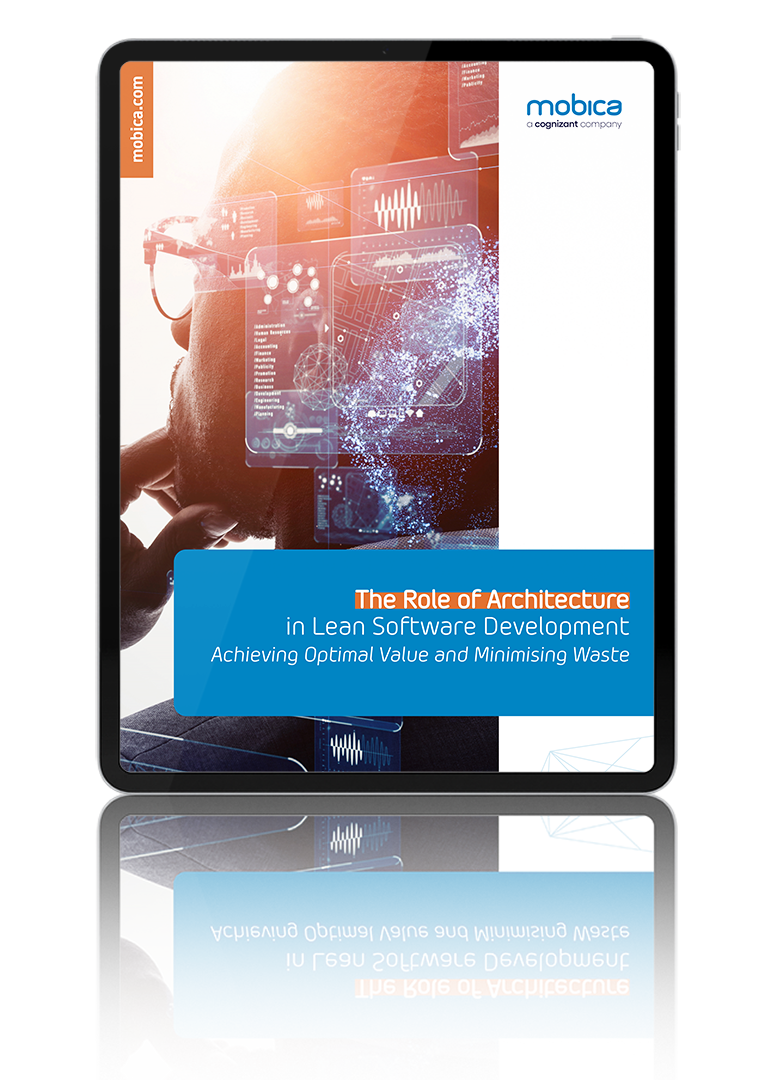The Role of Architecture in Lean Software Development_
Achieving optimal value and minimising waste

Based on 7 core principles, Lean has emerged as an alternative approach within the Agile software development community. Similar, yet distinct, from the more widely accepted Scrum approach, Lean places an emphasis on removing ‘waste’ from its projects.
On occasions, ‘waste’ can even include software architecture. However, development teams need to be careful not to discard architecture too easily. Architecture can also play a crucial role in enabling the Lean approach - helping teams to deliver projects faster and delay crucial decisions until necessary, while still maintaining the integrity of the solution.

Join the visionaries_
To help developers understand how architecture adds value, Mobica has produced this new guide to highlight the ways architecture supports the 7 core principles of Lean development, with real-life business examples. The 7 core principles are:
- Eliminating waste
- Amplifying learning
- Deciding as late as possible
- Delivering as fast as possible
- Empowering the team
- Building integrity in
- Optimising the whole

Extracts_
“When architecture is combined with an Agile philosophy, it allows teams to focus on the changing day-to-day demands of a business, without jeopardising the long-term viability of the overall solutions. To support this emergent approach, teams will need to deploy an architectural development method, such as Microsoft's ‘A Technique for Architecture and Design’. This will allow teams to shift focus to a short-term business goal.”
“It is never easy to change a decision taken earlier in a project, especially if it has already generated costs in the form of licences, as well as time and effort. So, if it is possible to delay decisions, it is often preferable to do so. Architecture helps teams to do this by identifying the areas of a solution where there is uncertainty and where doors can be left open for changes later. This approach is sometimes referred to as an ‘Iteration 0’.”
Download the E-GuideContributors_

Mariusz Stolarski
Global Head of Technology Office at Mobica
Exploring the cutting-edge technology of tomorrow and how it reshapes society, Dr Mariusz Stolarski is a technology leader and solution architect, with a PhD in Automatic Control and Robotics. Mariusz has a wealth of experience in helping organisations of all sizes plan and execute their technology strategies. He helps companies make the most of their technology investments by developing innovative solutions, while leading a team of experts to make it all happen. A member of the Technology Advisory Board, Mariusz is obsessed with the technologies of tomorrow and making them available to the world today.

Krzystof Knapik
Lead Architect at Mobica
Building the future of software architecture, Krzysztof leads the way to success through strategic software architecture and compliance with business and technical requirements – crafting architectural solutions to help organisations meet their goals. With nearly two decades of experience, he is leading The Architecture Guild initiative to provide unified and consolidated knowledge of software architecture. Krzysztof is passionate about developing innovative solutions to complex software problems and making an impact.
The Role of Architecture in Lean Software Development
Simply fill in your details to download the free e-guide_
Discover the ways architecture supports the 7 core principles of Lean development, with real-life business examples.
